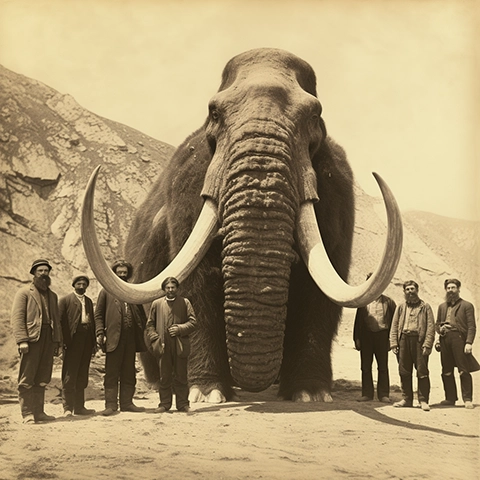In 1891, a remarkable discovery sent shockwaves through the scientific community and ignited the imaginations of people worldwide. It was a find of unparalleled significance – the remains of a live woolly mammoth. This ancient behemoth, a creature that had long been extinct, had seemingly defied time itself. The story of this incredible discovery and the scientific fervor it inspired is a testament to the insatiable human curiosity and the ever-evolving understanding of our prehistoric world.
The tale begins in the vast, remote tundra of Siberia, Russia, a region known for its bitterly cold winters and unforgiving terrain. It was in this harsh and desolate landscape that an astonishing encounter took place. Local reindeer herders, led by a man named Yakov Vinokurov, stumbled upon a sight that defied belief – a woolly mammoth, frozen in ice. The animal appeared almost perfectly preserved, its massive frame appearing as if it had only just fallen asleep.
News of this discovery quickly spread, and it wasn’t long before a team of scientists and explorers descended upon the site. They were astounded by the well-preserved mammoth, with its long, shaggy hair, enormous curved tusks, and unmistakable prehistoric aura. The specimen was a male mammoth, which they later named “Yakut,” in honor of the local Yakut people who first found him.
The circumstances of Yakut’s preservation were as remarkable as the discovery itself. He had become trapped in a peat bog, a fortunate twist of fate that had kept him in a state of suspended animation. The cold and acidic environment had slowed the decomposition process, allowing researchers a unique opportunity to study a creature that had walked the Earth over 10,000 years ago.
News of Yakut’s discovery captivated the world, and scientists wasted no time in their efforts to study this prehistoric giant. The process of extracting the mammoth from the frozen tomb was a painstaking and delicate operation. Using primitive tools and sheer determination, the team carefully chiseled away at the ice and peat, inch by inch, until they finally freed the mammoth’s remains.
Once removed, Yakut’s remains were transported to a laboratory, where researchers embarked on the meticulous task of studying his anatomy, physiology, and the ecological conditions of his time. The woolly mammoth, a distant relative of today’s elephants, provided valuable insights into Earth’s ancient climate, vegetation, and the biology of an Ice Age megafauna.
Yakut’s discovery had a profound impact on the scientific community and the understanding of prehistoric life. It fueled a renewed interest in paleontology and evolutionary biology, prompting further exploration of the frozen lands of Siberia in search of more preserved specimens. The discovery also brought attention to the tantalizing possibility of bringing extinct species back to life through genetic engineering, a topic that continues to captivate scientists and the public to this day.
While Yakut’s remains provided a wealth of knowledge, it also raised important ethical questions about the potential revival of extinct species and the conservation of current endangered ones. It served as a reminder of the delicate balance between scientific curiosity and the preservation of the natural world.
In the end, the story of Yakut, the live woolly mammoth found in 1891, remains a powerful chapter in the annals of paleontology and natural history. It stands as a testament to the enduring human fascination with the mysteries of the past and the unyielding quest to unravel them. Although Yakut may never walk the Earth again, his discovery continues to inspire wonder and ignite the flames of scientific exploration, proving that even in the harshest and most remote corners of the Earth, the past can still reach out to touch the present.

